The incomparable Herb Ritts and Titian were also at the Getty Center in Los Angeles, and some of Marie Antoinette’s hand-me-down furniture too. I think it can be safely said that gardeners are connoisseurs of the perfect moment, and last Sunday was that most exquisite of summer days, not too hot, just senusally warm and breezy, appreciated even more today for the fleeting rarity it was now that this week has brought the first real heat wave we’ve had this summer, along the coast at least. I’ve had such a strong itch to get to a museum lately. Must be all the press about the new *Barnes museum that’s been trickling in since its unveiling this spring in Philadelphia, which I hear includes a garden also, though there’s been little press so far about that. What few photos I’ve seen of the new Barnes’ garden depict a contemplative, austere space, the antithesis of Robert Irwin’s kinetic, kaleidoscopic maze at the Getty Center (to distinguish it from the Getty Villa in Malibu). But the controversy surrounding the new home of the Barnes Foundation reminds me of the raging controversy that Irwin’s garden for the Getty provoked at its unveiling in 1997.
And then there’s art controversies of the compound leafy kind. Here’s the melianthus in question. With those narrow leaflets, it’s definitely not M. major, and I’m inclined to think it’s M. comosus.
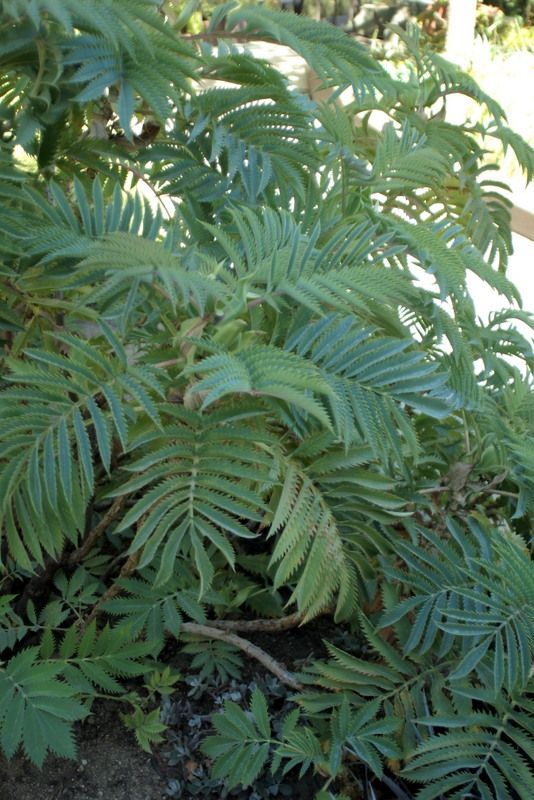
One of the lazy assumptions I’m inclined to make, and unfortunately there are many, has been to assume that the other species of melianthus are not really worth growing if you can have M. major, but this one at the Getty might be changing my mind. Slimmer leaflets, not as lush but a little more succulent in feel, create an even stronger rhythmic pattern. I’m pretty sure the dense effect must have been obtained by cutting it back hard, because although it’s reputedly smaller in size than M. major, it does tend toward lankiness. (San Marcos Growers: “This plant looks best if pruned hard and is often treated more like a perennial than a shrub.”)

The melianthus was planted at the top of the walkway leading down to the maze. This sylvan walkway flanking a tumbling stream is redolent with the fragrance of the London Plane trees lining either side, that strong scent of sycamore which to me will always be the perfume of summer and rivers.
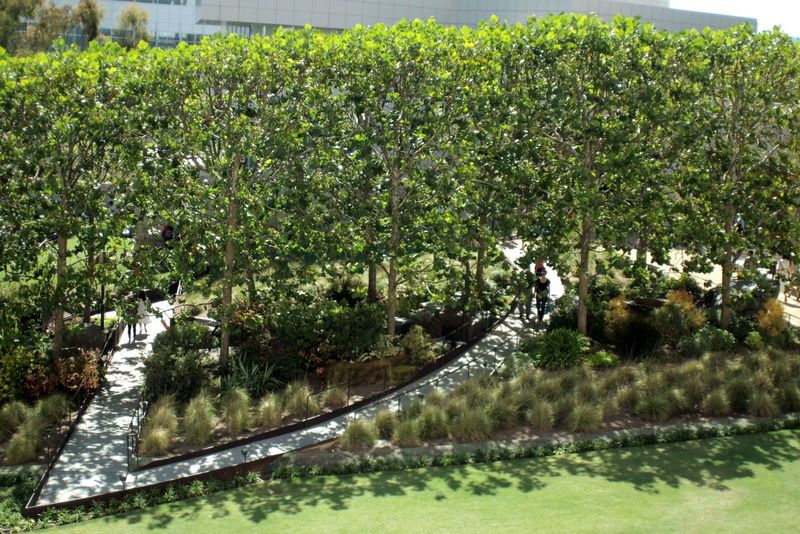
The stream hidden by the London Plane trees runs the entire length of the garden, ending in a dramatic spill into the azalea labyrinth.
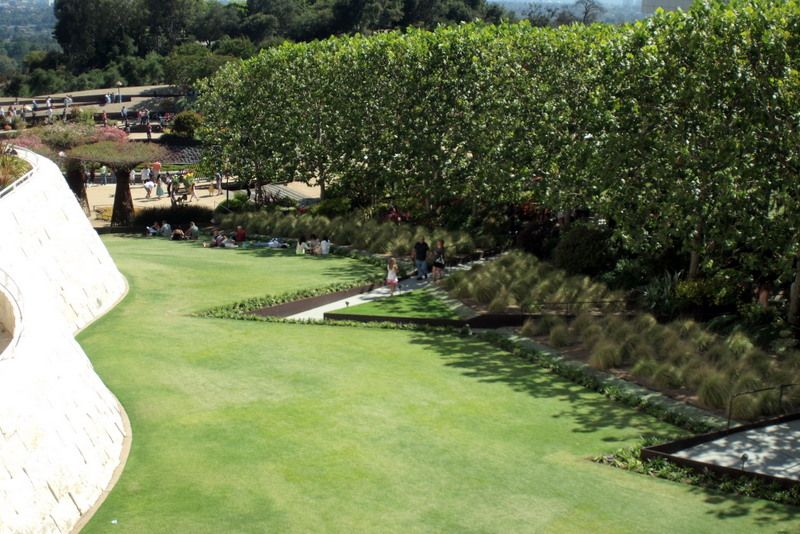
At the top, under the dappled shade of the sycamores, the Cor-Ten-bounded walkway plantings are filled with the strong leafy shapes of succulents, begonias, hellebores.
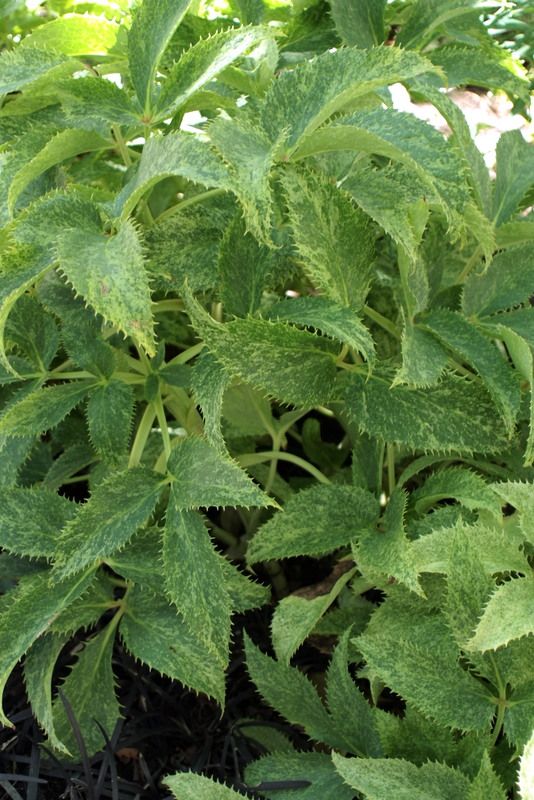
Hirsute Echeveria setosa, silvery dyckias, paddle plant Kalanchoe luciae, and a few blades of ophiopogon, the Black Mondo Grass.
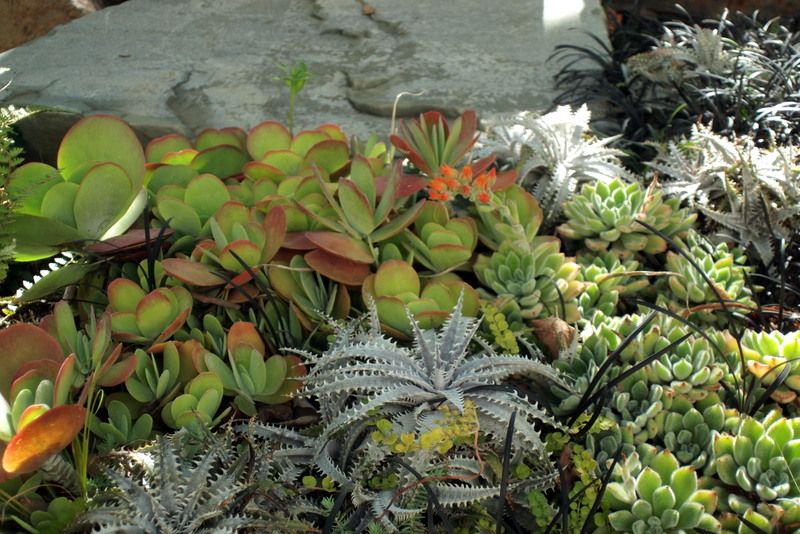
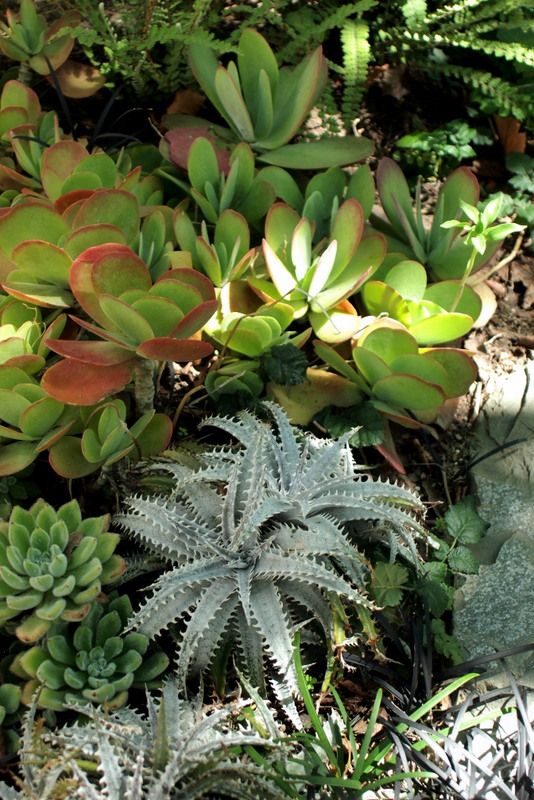
Begonias and variegated ginger
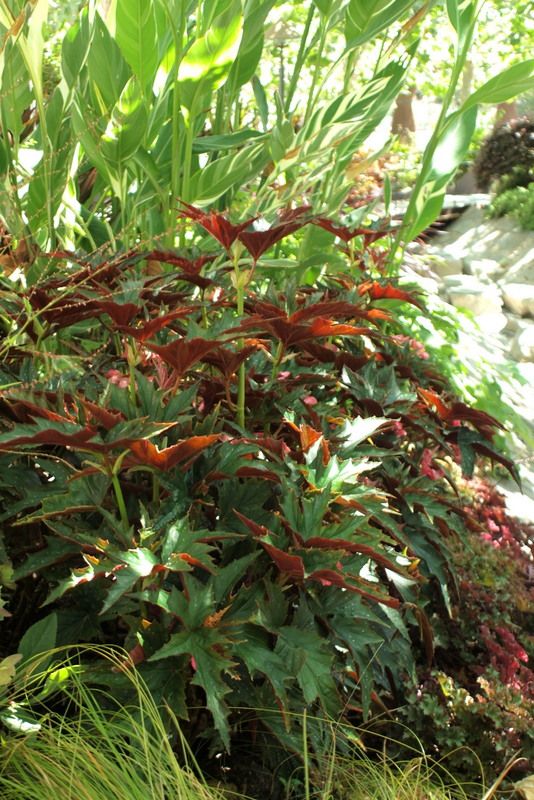
Astelia and persicaria

That lovely sycamore scent eventually gets supplanted by the overpoweringly skunky notes of variegated tulbaghia as you descend down the walkway toward the Central Garden. The mass planting of society garlic shimmering in the shifting light amidst the slender trunks of crepe myrtle trees is an undeniably powerful effect after the complex plantings of the upper walkway.

The improbable azalea maze in blinding full sun. Cotinus ‘Golden Spirit’ on the left. Purple blur in the distant background on the left is tibouchina, the princess flower, whose leaves were burning in the strong sunlight. The maze garden started looking its best towards closing time at 5:30 p.m. During the summer, this Getty is open til 9 p.m. on Fridays and Saturdays.

I can’t say the summer plantings of mostly dahlias were my favorite part of the garden, probably because I had just seen dahlias grown to perfection under the kinder skies of the Pacific Northwest. The effect was more of a shabby cutting garden, but the public seemed happy enough with the results. Irwin’s design calls for these labor-intensive, concentric borders surrounding the azalea pool to provide a triumphant and dizzying swirl of shape and color under a strong Mediterranean sun, and that’s a tall order. I think it’d be fantastic as a semi-desert garden, but the public might call foul. Art critic Christopher Knight had this to say about Irwin’s “folly” when it faced a barrage of criticism at its unveiling over a decade ago, and not for the plantings but for its very existence and the exuberant, almost comic contrast it presented to Meier’s stark, monumental architecture: “The great thing about a garden folly is that it’s, well, a folly. In a world of practical decorum, rationalism suddenly doesn’t apply. When the folly is conceived as the garden itself, rather than a discrete structure within a garden, then be prepared to suspend every expectation.” (Quote obtained here.)
On the path behind the massed society garlic, overlooking brugmansias, cannas, and a pomegranate tree to the giant bougainvillea rebar arbors.
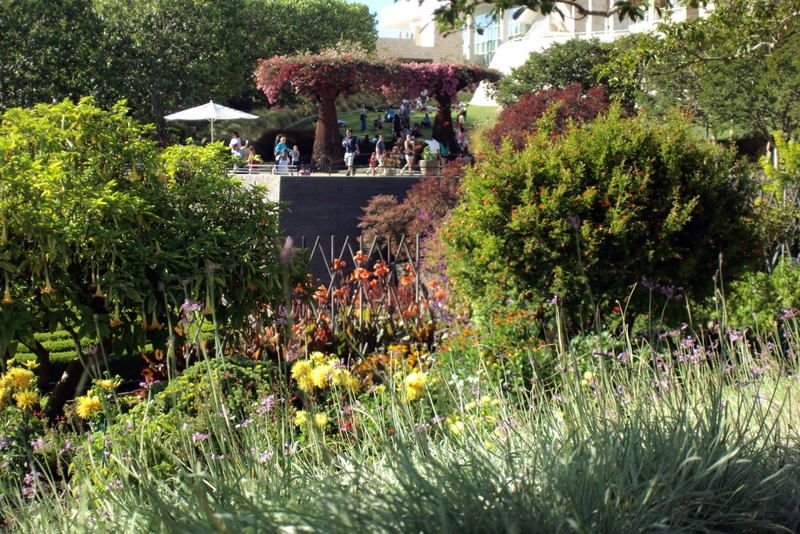
Always fascinating to uncover the multiple, shifting perspectives in Robert Irwin’s garden.
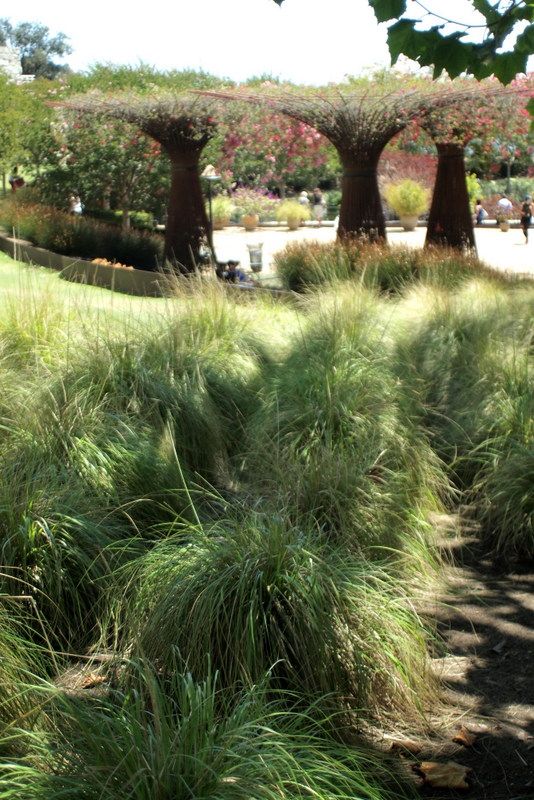
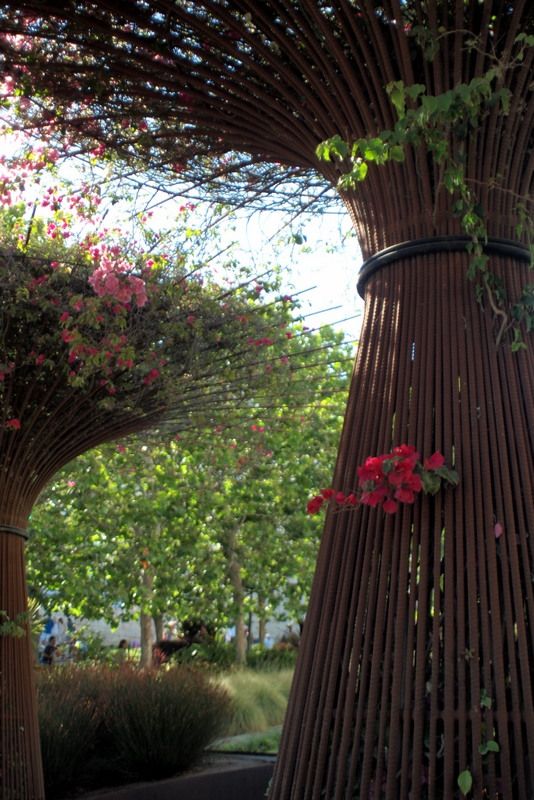
This visit I was struck by the sensitive treatment of trees, whether silhouetted against Meier’s exquisite travertine limestone or weeping into clean-swept expanses of decomposed granite, like these California pepper trees.
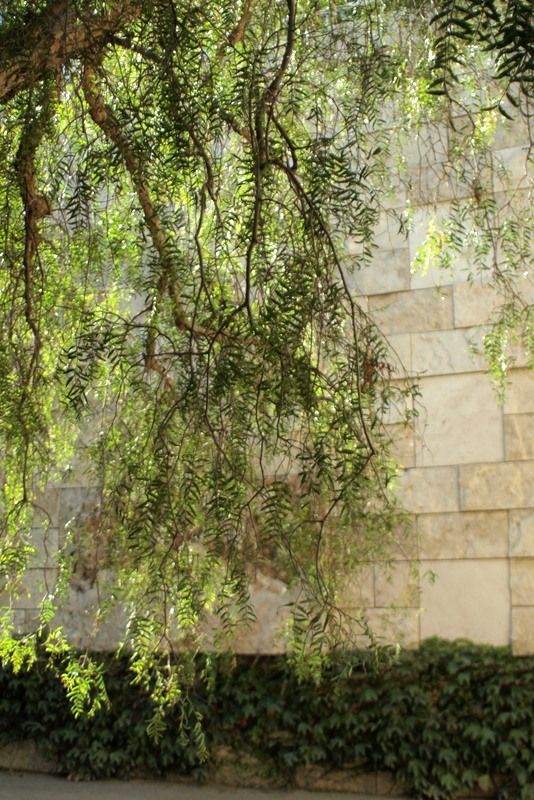
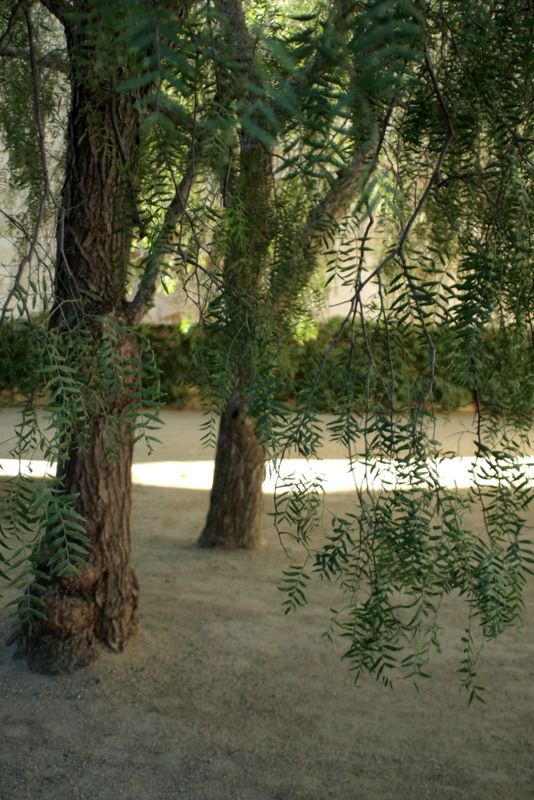
On the upper terraces closer to the museum, a bank of large pots massed together were planted simply and effectively with tough, scrubby stuff like helichrysum and Pelargonium sidoides.

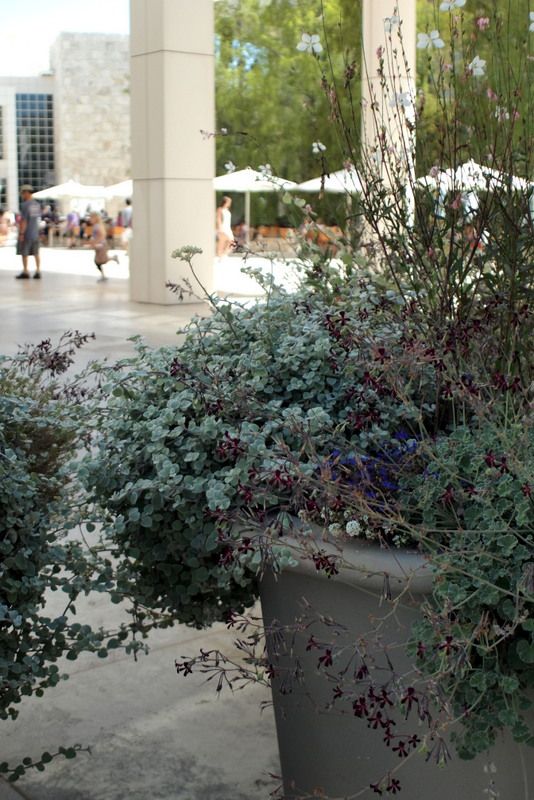
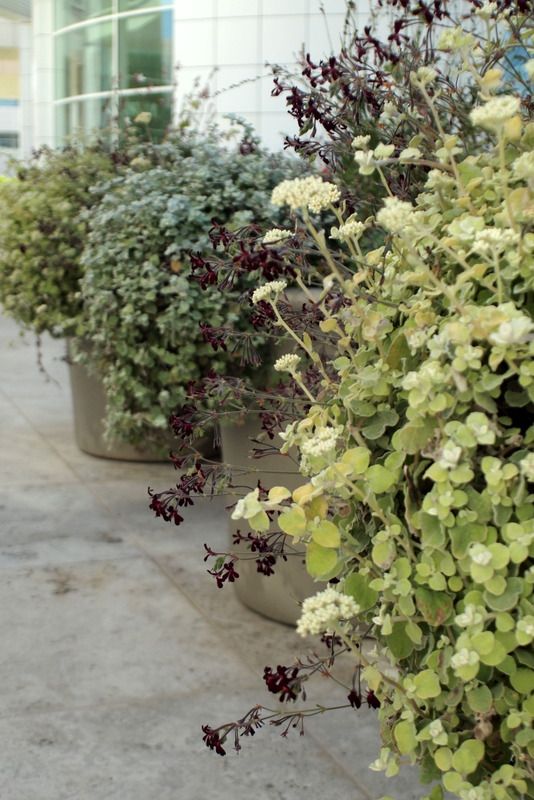
Museum fatigue usually hits me after an hour or so, but not this day. Even after five hours, I had to be reminded by security guards that the museum was closing and it was time to get a move on. The Herb Ritts photography exhibit closes September 2, 2012.
*Christopher Knight, art critic for the Los Angeles Times, is one of the diehard defenders of Albert Barnes’ original vision for his art collection. His review of the relocation of the collection to a new building in Philadelphia includes some helpful context for some of the timeless issues encapsulated in the debate over the Barnes collection: “Typical museums juxtapose art objects according to traditional knowledge categories like period, style or place. Not Barnes. His irreverent inventiveness used formal qualities — physical context, color, line, composition, texture, scale, space, etc. — to jump-start imagination. The result demanded that a visitor look and look hard.”
For more background on the Barnes, here’s a trailer to the controversial documentary entitled “The Art of the Steal.”

Oh my goodness! What an interesting and engaging garden. Seems that it radically changes its character depending on what path you are walking down. LOVE it! You’ve done a marvelous job of taking us on this tour with you. Great photos. I’d really love to see this in person sometime. So are all those plantings hardy there? Really love that mix of Echeveria setosa, dyckias and Kalanchoe luciae. The dyckias contrast wonderfully with the form of the succulents. Gives me some ideas for my front steps succulent collection.
I have seen several pieces on this garden, and what strikes me most is that it must be very water intensive, at least judging from some of the plants chosen. I could be wrong, maybe there is an elaborate water harvesting and saving plan.
Enjoyed this post — I had an entire day to myself, completely alone at the Getty in 2008, and spent much of it in this intriguing, highly structural (I like your word “kinetic”) garden. I had one of those experiences you describe, the perfect moment of temperature, sensory excitement, solitude, weather, design, plant novelty… oh my. I will always remember the Getty garden. When we were there this winter it looked to be under extensive renovation. Good to see it is fully open now and looking good.
Thanks for stirring up my memory of the Getty garden.
@Deanne, the first time you see it is unforgettable. I should go more frequently to see how they change the garden for the seasons, but those plants you mentioned are all hardy here. I know that they grow sweet peas for early spring bloom, before the dahlias. Maybe Cindy will make it out to the new Barnes!
@Les, the dahlia borders would need steady moisture but the upper walkways not so much — other than the fact that those gorgeous London Planes must be sucking in quite a bit too.
@Laurrie, some days are pure magic, huh?
Nice to see an update on one of my favorite newer gardens – I visited some years ago, shortly after it opened. I wondered about the azaleas forming the maze. It seemed an odd choice, and I wondered how they would do in your dry, hot summers. They certainly look lush in your photos.
I was there in April last year, and saw nary a Dahlia but many an Allium. What struck me was that because of the design, the setting, the hardscape–even the common seemed uncommon.It was akin to the Agapanthus in the-garden-that-shall-not-be-named.
Looks like a lot of the plants have been changed out since last I was there two years ago. Apparently their budget has recovered. Still waiting, (how many years on now?), for the bougies to really fill up those rebar structures…looks like they are finally advancing. Thanks for the tour!